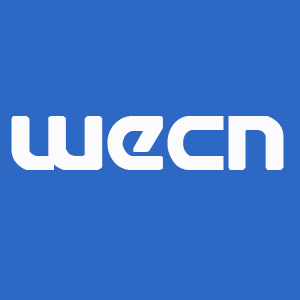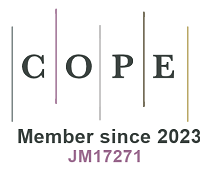How the unique diversity of extreme cyanobacteria can hold the key to novel algae-based products
The treatment of domestic solid waste generates a highly toxic byproduct known as leachate. These landfill leachates represent an imminent risk to human health and the environment due to high concentrations of dissolved organic and inorganic compounds such as nitrites, ammonia nitrogen, total phosphorus, Chemical oxygen demand, and biological oxygen demand 5 (BOD5), as well as heavy metals such as aluminum, arsenic, cyanide, cobalt, copper, chromium, mercury, chromium, zinc, and others. The main negative effects of the presence of leachates include contamination of soils, surface water, and groundwater, where there are problems in the proper growth of plants, alteration of optimal soil conditions, and eutrophication and toxicity in bodies of water, generating a change in native flora and fauna and bioaccumulation of heavy metals that will be transmitted throughout the food web, among other alterations.
The different companies in charge of solid waste disposal seek strategies to minimize risks and comply with current environmental policies. Currently, most landfills in Latin America have leachate storage systems to facilitate the evaporation and passive concentration of this waste. Other companies use reverse osmosis systems to concentrate the different contaminants and recover the water. Implementing strategies to reduce environmental and public health risks in the landfill sector is a priority and challenge for government agencies and disposal companies. Several physicochemical and biological processes have been extensively studied in leachate treatment; however, despite the efficiency demonstrated, the high costs of the materials and equipment required, as well as the high energy consumption, make them unsustainable.
Over the last years, microalgae and cyanobacteria have obtained a privileged place in the global biotechnological spotlight since their large diversity can unlock novel metabolites that can improve the creation of existing and new products.
One of the most interesting applications of microalgae and cyanobacteria is the removal of nutrients from polluted waters, better known as phytoremediation. Phytoremediation using microalgae is not new; the first studies were carried out in San Obispo (California) by Prof. William J. Oswald’s group in the mid-1950s. By employing this principle, it is possible to transform certain effluents while reducing their impact and producing biomass with metabolites of industrial interest[1].
To understand a little more about the scientific interest in phytoremediation, a search was conducted in SCOPUS for the last 22 years (2000-2022) using the keywords “leachate” AND “landfill” AND “microalgae”. According to this search, it was possible to identify 166 documents [Figure 1A] published during this period, where the main countries where research processes in this area have been developed are China (29), the United States (29), Denmark (16), and others [Figure 1B].
Figure 1. (A) Number of documents published during the last 22 years and (B) countries with the highest number of publications[2].
The information presented in the previous section made it possible to identify the co-occurrence of the main keywords using VOSViewer software. According to the results, four clusters were found [Figure 2]. The 4 clusters can be distinguished and separated by colors. The main clusters refer to the physical conditions for leachate and algae capture (green), while the others group the keywords for landfill treatment conditions (red) and their environmental impact (blue). It should also be noted that the valorization of this biomass and its environmental impact is not yet a topic of great relevance in the literature, so the technical and scientific void is evident.
One of the main problems for efficient leachate treatment using microalgae or cyanobacteria is strain selection. Due to the unique chemical composition of this type of waste, and the high diversity of microalgae and cyanobacteria, there is no “optimal strain” thus far. Hence, it is necessary to isolate and identify the strain (or strains) that have the highest nutrient removal capacity.
DECLARATIONS
AcknowledgmentsWe would like to express our sincere gratitude to Sapienza University of Rome (Italy) and Universidad Francisco de Paula Santander (Colombia) for providing the equipment for this research and the Colombian Ministry of Science Technology and Innovation MINCIENCIAS for the support of national Ph.D. Doctorates through the Francisco José de Caldas scholarship program.
Authors’ contributionsConceptualization, methodology, software, validation, formal analysis, investigation, data curation, writing-original draft preparation: Zuorro A, García-Matínez JB, Barajas-Solano AF
Availability of data and materialNot applicable.
Financial support and sponsorshipThis paper was supported by Newton-Caldas Fund Institutional Links, with the project “ALGALCOLOR: BIO-PLATFORM FOR THE SUSTAINABLE PRODUCTION OF CYANOBACTERIAL-BASED COLOURS AND FINE CHEMICALS” ID 527624805.
Conflicts of interestAll authors declared that there are no conflicts of interest.
Ethical approval and consent to participateNot applicable.
Consent for publicationNot applicable.
Copyright© The Author(s) 2022.
Cite This Article
How to Cite
Download Citation
Export Citation File:
Type of Import
Tips on Downloading Citation
Citation Manager File Format
Type of Import
Direct Import: When the Direct Import option is selected (the default state), a dialogue box will give you the option to Save or Open the downloaded citation data. Choosing Open will either launch your citation manager or give you a choice of applications with which to use the metadata. The Save option saves the file locally for later use.
Indirect Import: When the Indirect Import option is selected, the metadata is displayed and may be copied and pasted as needed.
About This Article
Copyright
Data & Comments
Data



















Comments
Comments must be written in English. Spam, offensive content, impersonation, and private information will not be permitted. If any comment is reported and identified as inappropriate content by OAE staff, the comment will be removed without notice. If you have any queries or need any help, please contact us at [email protected].